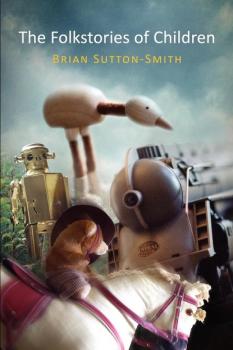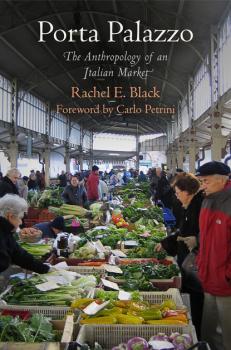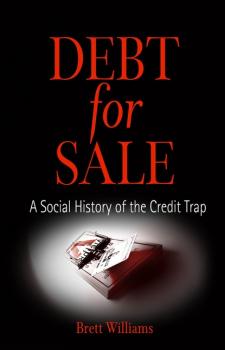Биология
Различные книги в жанре БиологияForging Rights in a New Democracy
The last two decades have been marked by momentous changes in forms of governance throughout the post-Soviet region. Ukraine's political system, like those of other formerly socialist states of Eastern Europe, has often been characterized as being «in transition,» moving from a Soviet system to one more closely aligned with Western models. Anna Fournier challenges this view, investigating what is increasingly recognized as a critical aspect of contemporary global rights discourse: the active involvement of young people living in societies undergoing radical change. Fournier delineates a generation simultaneously embracing various ideological stances in an attempt to make sense of social conditions marked by the disjuncture between democratic ideals and the everyday realities of growing economic inequality. Based on extensive fieldwork in public and private schools in the Ukrainian capital city of Kyiv, Forging Rights in a New Democracy explores high-school-aged students' understanding of rights and justice, and the ways they interpret and appropriate discourses of citizenship and civic values in the educational setting and beyond. Fournier's rich ethnographic account assesses the impact on the making of citizens of both formal and informal pedagogical practices, in schools and on the streets. Chronicling her subjects' encounters with state representatives and «violent entrepreneurs» as well as their involvement in peaceful protests alongside political activists, Fournier demonstrates the extent to which young people both reproduce and challenge the liberal discourse of rights in ways that illuminate the everyday paradoxes of market democracy. By tracking students' active participation in larger contests about the nature of liberty and entitlement in the context of redefined rights, her book provides insight into emergent configurations of citizenship in the New Europe.
Hosts and Guests
Tourism—one of the world's largest industries—has long been appreciated for its economic benefits, but in this volume tourism receives a unique systematic scrutiny as a medium for cultural exchange. Modern developments in technology and industry, together with masterful advertising, have created temporarily leisured people with the desire and the means to travel. They often in turn effect profound cultural change in the places they visit, and the contributors to this work all attend to the impact these «guests» have on their «hosts.» In contrast to the dramatic economic transformations, the social repercussions of tourism are subtle and often recognized only by the indigenous peoples themselves and by the anthropologists who have studied them before and after the introduction of tourism. The case studies in Hosts and Guests examine the five types of tourism—historical, cultural, ethnic, environmental, and recreational—and their impact on diverse societies over a broad geographical range
The Folkstories of Children
What prompts children to tell stories? What does the word «story» mean to a child at two or five years of age? The Folkstories of Children , first published in 1981, features nearly five hundred stories that were volunteered by fifty children between the ages of two and ten and transcribed word for word. The stories are organized chronologically by the age of the teller, revealing the progression of verbal competence and the gradual emergence of staging and plot organization. Many stories told by two-year-olds, for example, have only beginnings with no middle or end; the «narrative» is held together by rhyme or alliteration. After the age of three or four, the same children tell stories that feature a central character and a narrative arc. The stories also exhibit each child's growing awareness and management of his or her environment and life concerns. Some children see their stories as dialogues between teller and audience, others as monologues expressing concerns about fate and the forces of good and evil. Brian Sutton-Smith discusses the possible origins of the stories themselves: folktales, parent and teacher reading, media, required writing of stories in school, dreams, and play. The notes to each chapter draw on this context as well as folktale analysis and child development theory to consider why and how the stories take their particular forms. The Folkstories of Children provides valuable evidence and insight into the ways children actively and inventively engage language as they grow.
Porta Palazzo
Porta Palazzo, arguably Western Europe's largest open-air market, is a central economic, social, and cultural hub for Italians and migrants in the city of Turin. Open-air markets like Porta Palazzo have existed for centuries in Europe; although their function has changed over time—traditional markets are no longer the primary place to buy food—they remain popular destinations. In an age of supermarkets and online commerce, markets offer unique social and cultural opportunities and bring together urban and rural worldviews. These factors are often overlooked in traditional economic studies of food distribution, but anthropologist Rachel E. Black contends that social relations are essential for building and maintaining valuable links between production and consumption. From the history of Porta Palazzo to the current growing pains of the market, this book concentrates on points where trade meets cultural identities and cuisine. Its detailed and perceptive portraits of the market bring into relief the lives of the vendors, shoppers, and passersby. Black's ethnography illuminates the daily work of market-going and the anxieties of shoppers as they navigate the market. It examines migration, the link between cuisine and cultural identity, culinary tourism, the connection between the farmers' market and the production of local food, and the urban planning issues negotiated by the city of Turin and market users during a recent renovation. This vibrant study, featuring a foreword by Slow Food Movement founder Carlo Petrini, makes a strong case for why markets like Porta Palazzo are critical for fostering culinary culture and social life in cities.
The Risk of War
The Risk of War focuses on practices and performances of everyday life across ethnonational borders during the six-month armed conflict in 2001 between Macedonian government forces and the Albanian National Liberation Army (NLA)—a conflict initiated by the NLA with the proclaimed purpose of securing greater rights for the Albanian community in Macedonia and terminated by the internationally brokered Ohrid Framework Agreement. Anthropologist Vasiliki P. Neofotistos provides an ethnographic account of the ways middle- and working-class Albanian and Macedonian noncombatants in Macedonia's capital city, Skopje, went about their daily lives during the conflict, when fear and uncertainty regarding their existence and the viability of the state were intense and widespread. Neofotistos finds that, rather than passively observing the international community's efforts to manage the political crisis, members of the Macedonian and Albanian communities responded with resilience and wit to disruptive and threatening changes in social structure, intensely negotiated relationships of power, and promoted indeterminacy on the level of the everyday as a sense of impending war enfolded the capital. More broadly, The Risk of War helps us better understand how postindependence Macedonia has managed to escape civil bloodshed despite high political volatility, acute ethno-nationalist rivalries, and unrelenting external pressures exerted by neighboring countries.
On the Move for Love
Since the Korean War, gijichon —U.S. military camp towns—have been fixtures in South Korea. The most popular entertainment venues in gijichon are clubs, attracting military clientele with duty-free alcohol, music, shows, and women entertainers. In the 1990s, South Korea's rapid economic advancement, combined with the stigma and low pay attached to this work, led to a shortage of Korean women willing to serve American soldiers. Club owners brought in cheap labor, predominantly from the Philippines and ex-Soviet states, to fill the vacancies left by Korean women. The increasing presence of foreign workers has precipitated new conversations about modernity, nationalism, ethnicity, and human rights in South Korea. International NGOs, feminists, and media reports have identified women migrant entertainers as «victims of sex trafficking,» insisting that their plight is one of forced prostitution. Are women who travel to work in such clubs victims of trafficking, sex slaves, or simply migrant women? How do these women understand their own experiences? Is antitrafficking activism helpful in protecting them? In On the Move for Love , Sealing Cheng attempts to answer these questions by following the lives of migrant Filipina entertainers working in various gijichon clubs. Focusing on their aspirations for love and a better future, Cheng's ethnography illuminates the complex relationships these women form with their employers, customer-boyfriends, and families. She offers an insightful critique of antitrafficking discourses, pointing to the inadequacy of recognizing women only as victims and ignoring their agency and aspirations. Cheng analyzes the women's experience in South Korea in relation to their subsequent journeys to other countries, providing a diachronic look at the way migrant issues of work, sex, and love fit within the larger context of transnationalism, identity, and global hierarchies of inequality.
Child Soldiers in Africa
Young people have been at the forefront of political conflict in many parts of the world, even when it has turned violent. In some of those situations, for a variety of reasons, including coercion, poverty, or the seductive nature of violence, children become killers before they are able to grasp the fundamentals of morality. It has been only in the past ten years that this component of warfare has captured the attention of the world. Images of boys carrying guns and ammunition are now commonplace as they flash across television screens and appear on the front pages of newspapers. Less often, but equally disturbingly, stories of girls pressed into the service of militias surface in the media. A major concern today is how to reverse the damage done to the thousands of children who have become not only victims but also agents of wartime atrocities. In Child Soldiers in Africa , Alcinda Honwana draws on her firsthand experience with children of Angola and Mozambique, as well as her study of the phenomenon for the United Nations and the Social Science Research Council, to shed light on how children are recruited, what they encounter, and how they come to terms with what they have done. Honwana looks at the role of local communities in healing and rebuilding the lives of these children. She also examines the efforts undertaken by international organizations to support these wartime casualties and enlightens the reader on the obstacles faced by such organizations.
Unraveling Somalia
In 1991 the Somali state collapsed. Once heralded as the only true nation-state in Africa, the Somalia of the 1990s suffered brutal internecine warfare. At the same time a politically created famine caused the deaths of a half a million people and the flight of a million refugees. During the civil war, scholarly and popular analyses explained Somalia's disintegration as the result of ancestral hatreds played out in warfare between various clans and subclans. In Unraveling Somalia , Catherine Besteman challenges this view and argues that the actual pattern of violence—inflicted disproportionately on rural southerners—contradicts the prevailing model of ethnic homogeneity and clan opposition. She contends that the dissolution of the Somali nation-state can be understood only by recognizing that over the past century and a half there emerged in Somalia a social order based on principles other than simple clan organization—a social order deeply stratified on the basis of race, status, class, region, and language.
Body and Emotion
Body and Emotion is a study of the relationship between culture and emotional distress, an examination of the cultural forces that influence, make sense of, and heal severe pain and malaise. In order to investigate this relationship, Robert R. Desjarlais served as an apprentice healer among the Yolmo Sherpa, a Tibetan Buddhist people who reside in the Helambu region of north-central Nepal.
Debt for Sale
Credit and debt appear to be natural, permanent facets of Americans' lives, but a debt-based economy and debt-financed lifestyles are actually recent inventions. In 1951 Diners Club issued a plastic card that enabled patrons to pay for their meals at select New York City restaurants at the end of each month. Soon other «charge cards» (as they were then known) offered the convenience for travelers throughout the United States to pay for hotels, food, and entertainment on credit. In the 1970s the advent of computers and the deregulation of banking created an explosion in credit card use—and consumer debt. With gigantic national banks and computer systems that allowed variable interest rates, consumer screening, mass mailings, and methods to discipline slow payers with penalties and fees, middle-class Americans experienced a sea change in their lives. Given the enormous profits from issuing credit, banks and chain stores used aggressive marketing to reach Americans experiencing such crises as divorce or unemployment, to help them make ends meet or to persuade them that they could live beyond their means. After banks exhausted the profits from this group of people, they moved into the market for college credit cards and student loans and then into predatory lending (through check-cashing stores and pawnshops) to the poor. In 2003, Americans owed nearly $8 trillion in consumer debt, amounting to 130 percent of their average disposable income. The role of credit and debt in people's lives is one of the most important social and economic issues of our age. Brett Williams provides a sobering and frank investigation of the credit industry and how it came to dominate the lives of most Americans by propelling the social changes that are enacted when an economy is based on debt. Williams argues that credit and debt act to obscure, reproduce, and exacerbate other inequalities. It is in the best interest of the banks, corporations, and their shareholders to keep consumer debt at high levels. By targeting low-income and young people who would not be eligible for credit in other businesses, these companies are able quickly to gain a stranglehold on the finances of millions. Throughout, Williams provides firsthand accounts of how Americans from all socioeconomic levels use credit. These vignettes complement the history and technical issues of the credit industry, including strategies people use to manage debt, how credit functions in their lives, how they understand their own indebtedness, and the sometimes tragic impact of massive debt on people's lives.









